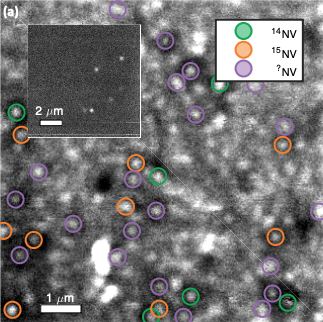
S. B. van Dam, M. Walsh,. Degen, E. Bersin, S. L. Mouradian, A. Galiullin,M. Ruf, M. IJspeert, T. H. Taminiau, R. Hanson, and D. R. Englund
DOI: arXiv:1812.11523v1
Abstract:
The advancement of quantum optical science and technology with solid-state emitters such as nitrogen-vacancy (NV) centers in diamond critically relies on the coherence of the emitters’ optical transitions. A widely employed strategy to create NV centers at precisely controlled locations is nitrogen ion implantation followed by a high-temperature annealing process. We report on experimental data directly correlating the NV center optical coherence to the origin of the nitrogen atom. These studies reveal low-strain, narrow-optical-linewidth (< 500 MHz) NV centers formed from naturally-occurring 14N atoms. In contrast, NV centers formed from implanted 15N atoms exhibit significantly broadened optical transitions (> 1 GHz) and higher strain. The data show that the poor optical coherence of the NV centers formed from implanted nitrogen is not due to an intrinsic effect related to the diamond or isotope. These results have immediate implications for the positioning accuracy of current NV center creation protocols and point to the need to further investigate the influence of lattice damage on the coherence of NV centers from implanted ions.
